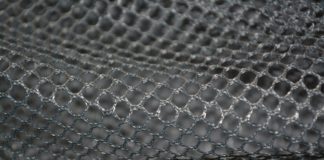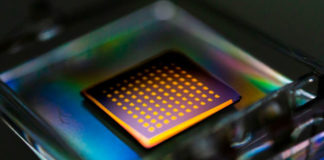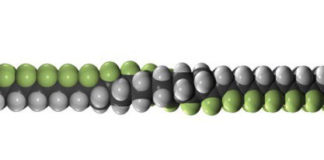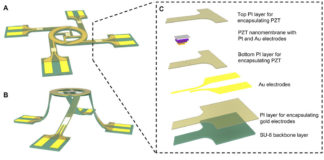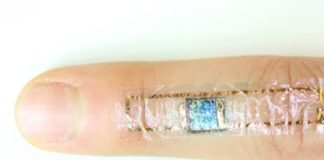Tag: flexible substrate
Polymers may be the key to single-molecule electronic devices
Scientists at Tokyo Institute of Technology and the University of Tsukuba demonstrate that polymers could play a key role in the fabrication of single-molecule...
Method to evaluate comfort of smart and functional textiles
Until now, user-friendliness has been the focus of the development of smart and functional textiles. Now it is time to address comfort when wearing...
Researchers harvest 2-D materials, bringing them closer to commercialization
Since the 2003 discovery of the single-atom-thick carbon material known as graphene, there has been significant interest in other types of 2-D materials as...
Flexible electronics made from exotic materials – MIT
Cost-effective method produces semiconducting films from materials that outperform silicon.
The vast majority of computing devices today are made from silicon, the second most abundant...
Enhancement of piezoelectric properties in organic polymers all in the molecules
The inability to alter intrinsic piezoelectric behavior in organic polymers hampers their application in flexible, wearable and biocompatible devices, according to researchers at Penn...
Biosensor ‘bandage’ collects and analyzes sweat
Like other biofluids, sweat contains a wealth of information about what’s going on inside the body. However, collecting the fluid for analysis, usually by...
Engineering 3-D mesostructures with mechanically active materials
Microelectromechanical systems (MEMS) have expansive applications in biotechnology and advanced engineering with growing interest in materials science and engineering due to their potential in...
A self-powered heart monitor taped to the skin
Scientists have developed a human-friendly, ultra-flexible organic sensor powered by sunlight, which acts as a self-powered heart monitor. Previously, they developed a flexible photovoltaic...
kinetiX—designing auxetic-inspired deformable material structures
This paper describes a group of auxetic-inspired material structures that can transform into various shapes upon compression. We developed four cellular-based material structure units...
Wearable sensors mimic skin to help with wound healing process
Researchers at Binghamton University, State University of New York, have developed skin-inspired electronics to conform to the skin, allowing for long-term, high-performance, real-time wound...






